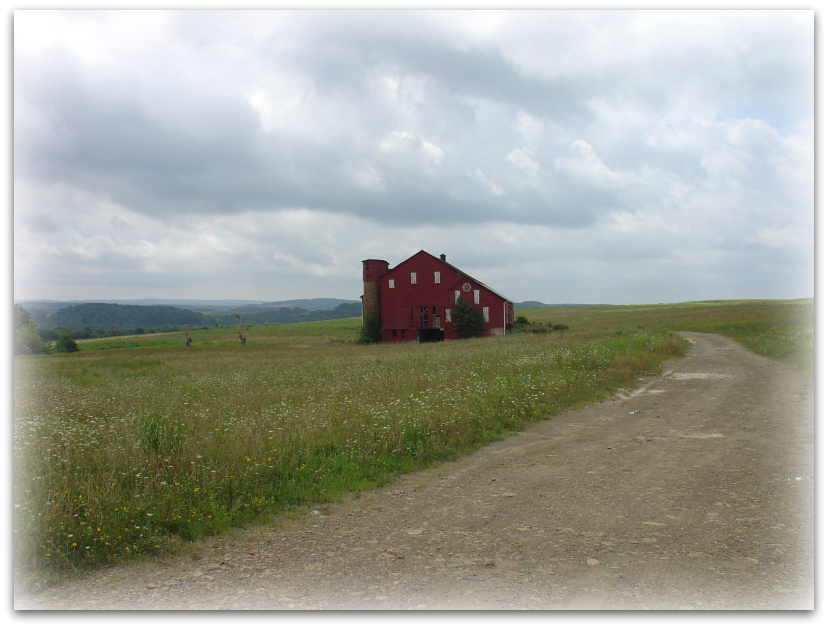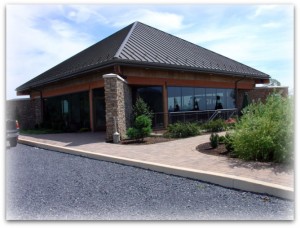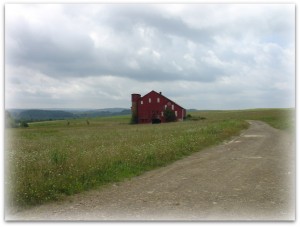 When planning on your next vacation or short trip into wine country, most think about Napa, Sonoma, Paso Robles, or other California wine appellations. The more adventuresome will even add Oregon and Washington state to their itinerary. So when looking for wineries outside of these areas, why not consider Pennsylvania? The most likely answer that will be given back is, “you are kidding?” However to my surprise, during a genealogical research trip to Somerset County with my wife (www.stanwoodfamily.com, click on blog), I found a Wine Festival featuring wines from Pennsylvania. The more surprising part of the trip is that there were a lot of really good wines.
When planning on your next vacation or short trip into wine country, most think about Napa, Sonoma, Paso Robles, or other California wine appellations. The more adventuresome will even add Oregon and Washington state to their itinerary. So when looking for wineries outside of these areas, why not consider Pennsylvania? The most likely answer that will be given back is, “you are kidding?” However to my surprise, during a genealogical research trip to Somerset County with my wife (www.stanwoodfamily.com, click on blog), I found a Wine Festival featuring wines from Pennsylvania. The more surprising part of the trip is that there were a lot of really good wines.
Pennsylvania is no longer the sweet Concord grape guzzling state that you may have remembered. Many years of cross-breeding grape varietals in order to bring hardier well rounded wine is slowly paying off. New farming techniques, better care in the barreling process, and a little luck is starting to produce some very nice wines. I am not saying that you will not find breakfast style Concord grape juice full of vitamins and yes, alcohol or even fruit drinks like blueberry, raspberry, etc. loaded with much of the same, you will. But if you want to experience wines that you cannot easily get in California, a trip to Pennsylvania may be in your future.
 My short trip started in Somerset County at the 2010 Wine & Food Festival at the Seven Springs Mountain Resort on August 14th. There were the usual crowds of people, tents, and wine. But what made it most interesting were the 29 wineries represented. Prior to going to this event, I did not even know that there were even five wineries in Pennsylvania, let alone 29 at this festival. But after talking with Gail Chiavetta and Melissa Wydra from the Pennsylvania State Liquor Control Board, I was pleasantly surprised to find over 140 wineries from 11 wine regions within the state. So many wineries, so little time… Need to set up a longer trip next time
My short trip started in Somerset County at the 2010 Wine & Food Festival at the Seven Springs Mountain Resort on August 14th. There were the usual crowds of people, tents, and wine. But what made it most interesting were the 29 wineries represented. Prior to going to this event, I did not even know that there were even five wineries in Pennsylvania, let alone 29 at this festival. But after talking with Gail Chiavetta and Melissa Wydra from the Pennsylvania State Liquor Control Board, I was pleasantly surprised to find over 140 wineries from 11 wine regions within the state. So many wineries, so little time… Need to set up a longer trip next time
Although not all the wineries in the state were at the festival, there were enough to provide a fairly good cross-section of the state’s winery regions and wineries abilities. With this in mind, three wineries really stood out. These were Allegro Vineyards, Presque Isle, and Hauser Estate Winery. Carl Helrich, a traditional wine maker and owner of Allegro Vineyards provided me with two whites and two red wines that were very traditional in nature. The wines were dry in their style and provided good rich structure. The Viognier was a light floral wine, low alcohol with hints of vanilla. It was very similar to a French style wine and had all the characteristics of a well-balanced Viognier with the right acid balance. This enjoyable wine could easily go against the wines of Peso and Napa, and yet the wine was a very reasonable price.
Next Carl served me a German style semi-dry Riesling. This light, very fresh taste was not overpowering and could easily go with light foods. The acid to sugar balance was harmonically balanced allowing the wine not to express too much citrus or to become too sweet. A good example of what a Riesling should taste like. As we finished the two whites, Carl started to pour the 2007 Cadenza, a predominant Merlot (76%), Cabernet Sauvignon/Franc (24%) blend. This wine had a very rich translucent ruby color that glistened in the Pennsylvania sunshine. The nose was a little lighter then I expected with raspberry and earthy notes. However the flavor was a very intense, well structured Merlot with rich dark cherry/raspberry notes, hints of earth and silky tannins. The Cabernet Sauvignon and Cabernet Franc added the needed spicy characteristics and complexity giving it a very Bordeaux styling. This wine could easily be cellared for up to 15 years. This should increase the earthly richness and complexity. If I were in California drinking this wine, I would have picked Howell, not Pennsylvania, demonstrating that wines with enough care and attention can produce wonderful flavors.
After we talked a little about his traditional style wine making techniques and the various wines that are made in the state, he pulled out the 2006 Bridge red wine. This wine is a little more fruit forward but still contained the complexity that I would expect in a good red blend. The wine contained firmer tannic structures with deep rich berry and cocoa flavors. A great wine to uncork right away and drink with beefy meats or sipped by itself. Candenza and Bridge have alcohol 13% to 13.5% respectively, yet are still dry and well balanced. This shows how a cooler climate provides the needed “hang time” for the grapes to provide the necessary flavors without the higher alcohol/sugar.
The next wines that were tasted were from Presque Isle Wine Cellars. Lauri Boettcher introduced me to a Sauvignon Blanc with very traditional flavors. This dry white expressed the normal melon and grapefruit that would be expected from a Sauvignon Blanc that had proper cultivation and canopy control during the growing season. The nose was light and fruity with hints of lemon grass. This wine was easy to drink and would be perfect for a warm, late morning, near the pool or even with eggs benedict. Although there were other wines that were enjoyable to drink, what really caught my pallet was 2007 Noiret.
This grape, develop by Cornell University for these eastern climates, produces wine flavors that seem similar to Los Carneros, Pinot Noir. The flavor is characterized by a light black pepper, raspberry, mint aromas and finished off with light silky tannins. Unlike a lot of American hybrids that end up with off flavors, this wine was very delicious. And since the grape fully ripens in mid-session, there is little chance of the grape being damaged by cold weather and a greater chance of a consistently good production. Good news for Presque Isle and consumers.
After finishing up all the wineries at the Wine and Food Festival, I came across Hauser Estate Winery. Since the winery was located along the route that my wife and I were taking to Gettysburg, I thought that a tasting at the winery would be a better choice. Hauser winery sits up a small hill on a 170 acre property and overlooks the Biglerville area. The view was beautiful and the wines were also very good.
Melisa Patrono met my wife and me in the tasting room. The wines ranged from the typical Pennsylvanian sweet fruit bomb wines to some very dry well-structured whites and reds. As most of the winery staff from a large number of vineyards stated, “the sweeter wines are what tends to sell, allowing the money to be used to make the wines we are passionate about.” Although we tasted only the reserve wines and all were wonderful, three truly stood out.
The first was a 2008 Reserve Chardonnay that had experience some extended barrel aging. This moderately oaked wine was easy to drink, and had gone through about 50% malolatic fermentation. This provided a crisp, clean mouth feel that was not overly creamy. Flavors included honeysuckle, white peach, and a little toasted oak that finished off with good hardy structure. This wine would be a great for just sipping, but would be able to stand up to meals that had fairly heavy cream bases.
The next two wines were the 2008 Reserve Cabernet Sauvignon and Cabernet Franc. The Cabernet Sauvignon was rich in dark rich berries, tobacco, and a little earth. Good balanced mouth-feel that lingered well over 45 seconds in the mouth without being overly tannic. Although the Cabernet Sauvignon is 100% Cabernet Sauvignon, it was pulled from pulled from different barrels that had varying differences in flavors and aromatics.
The Cabernet Franc, on the other hand, has traces of Cabernet Sauvignon. It boasts very earthy characteristics with bright red berries, chocolate, and rich coffee. Both Cabs provided a rich deep ruby color with a wonderful more fruit forward nose.
If you are a serious wine drinker and are on the way to Gettysburg PA, I would recommend sticking with most of the reserve wines at the Hauser Estate. In fact, a bottle opened up on the patio, overlook the vineyards would be a wonderful experience.
As we arrived at Gettysburg, night time started to fall upon us and the need for food was our next big mission. After combing the town, we came across J’s at the village, Casual Fine Dining. This little restaurant owned by Jason Hoover is a wonderful place to stop and refuel with great food and great atmosphere. Most people who have met me know some very specific things, that I like the finer things in life, but don’t like to pay expensive prices. I look for the best at the best value and I believe that J’s food is a good start when every in the Gettysburg area. So discovering this little gem was a perfect ending to our day. We order the chef’s special that was a three course meal.
The first course was slow roasted beef tenderloin with wild mushroom ragout served on a baguette, followed by a small spinach salad with goat cheese and strawberries. The main entrée was a saffron bouillabaisse with pacific cod, lump crab, mussel, shrimp, and lobster. The presentation was eloquent and work well against the white backdrop of the table cloth. The combinations of these flavors from each of the dishes were wonderful and provided us with a memorable experience. The meal was reasonable priced and showed the advantages of going to Pennsylvania versus some California destinations. This full prefix meal could have easily gone for twice the amount versus Santa Barbara, CA restaurants.
As we finished the evening in a beautiful suite at the Wyndham Hotel, the thoughts of great wines, fine dining, and wonderful historic sites in Pennsylvania spurred our conversation and reminded us of all the places we did not get to go. We reflected on the quality and value that we experienced and realized that next time we will have to stay longer and visit many more places. It is definitely a destination that we will be visiting again.



